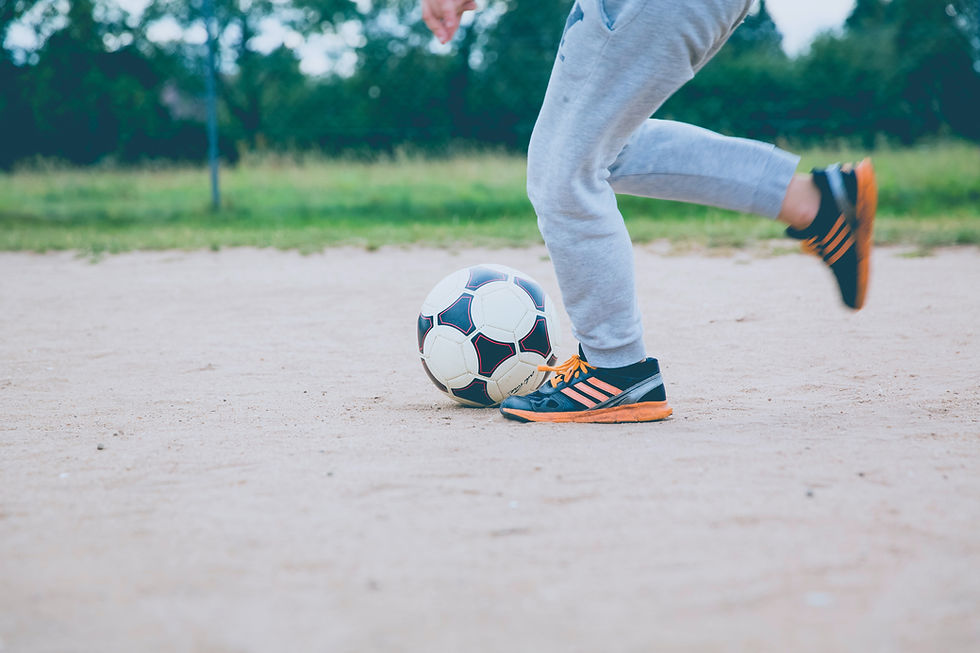It’s Essential for Kids to Play, Here’s Why
- Nathan Recess Guardians
- Mar 25, 2022
- 4 min read
Have you seen the most famous painting of children at play? Children’s Games made in 1560 by Pieter Bruegel, the Elder of a town square in which children of all ages can be seen playing a range of timeless games. The painting is so soothing to the eyes, and depicts the innocence of how children innately are - playful and cheerful. The painting serves as a great reminder today that in addition to being perfect at math, perhaps it’s also essential that children are perfect at being kids first.
Some people worry that our current culture is less friendly to play, which is reasonable in every sense. Children may not really be getting the chance to explore all possibilities of play. In an attempt to address this, the American Academy of Pediatrics (AAP) released a policy statement in 2018 titled "The Power of Play: A Pediatric Role in Enhancing Development in Young Children."

The statement describes play as intrinsically motivated, involving active engagement and resulting in ‘joyful discovery’. It sums up extensive developmental and neurological research on play, and works to tease out some of the specific developmental discoveries in how peek-a-boo and other repetitive games render the joy of being able to predict what’s going to happen, and how games like Simon Says build impulse control and executive function.
It also suggests that doctors should encourage playful learning for parents by drafting a 'prescription for play' at every visit in the first two years of a kid’s life. The statement is important, as those studying play feel that it is under siege even with ongoing new research on its importance in child development.
Dr. Michael Yogman, chairman of the AAP committee on psychological aspects of child family health and lead author of the statement, feels that parents nowadays are scheduling every minute of structured time, and about 30 percent of kindergartens don’t offer recess at all. He points out that ‘play is seen as irrelevant and old-fashioned’ by some of them.
As Dr. Yogman notes, play provides major development for kids. They develop 21st-century skills, which are crucial for adults in the new economic structures that help them innovate and collaborate, says. He remarks that play is also great and important in building and strengthening the parent-child relationship, which is a fundamental job in pediatric primary care. When a child as young as 3-month-old smiles and the parent smiles back at them, such turn-taking activities are actually crucial in developing language and social-emotional skills, just like taking turns.
Stable relationships with parents and other caregivers like teachers built through these interactions are extremely important for supporting children to steer clear of stress and trauma we call ‘toxic stress’ from destroying the child’s critical developmental years.
The policy statement also goes into detail on research that shows that play can affect the developing brain, not only in its function but also its basic structure - changes can be proven by measuring at the molecular and cellular levels and at the level of behaviour and executive function.
Schools, when allowing children at least 20 minutes of recess, can help give them that crucial time where they communicate with each other freely and indulge in unstructured play. Their play helps them learn and keeps them active to sustain themselves for the other half of the school day. Playful learning doesn’t mean children should only be left to play and discover things on their own, which is, of course, a part of development, but also means to support their intrinsic motivation to learn and discover, rather than forcefully impose extrinsic motivations like test scores.
What also holds true is that play shouldn’t only be restricted to recess. It can also be included in classes. For example, by giving them puzzles to solve and letting them do it together in a playful manner. However, teachers and parents should only help children when they really need help, and for the most part let them do things themselves. For example, if a child is doing a puzzle and gets stuck somewhere, parents or teachers don’t need to do it for them. Instead, they can help with a clue and let them find where the piece might fit.
Reading, playing, going outside, and everything else that amounts to a healthy, busy childhood are essential. And it is clear all these different ideas can be connected by some essential underlying themes. But as technology has advanced at a rapid pace since we ourselves were children, we know that a screen can be both friend and foe, especially when it’s taken over us as adults too.
There’s a growing necessity to keep interacting with children in and out of recess, helping them with their curious questions and queries and giving them as much of a screen-less environment as possible, even if screen time involves playing an ‘educational game’.
Another activity that children can do both in recess and after or before is reading. Dr. Yogman points out that reading allows kids to imagine what their role would be, which is playful and healthy as getting outside and physically moving and exercising are. So, a prescription for play could be telling parents and teachers to rely on their conscience and common sense about where they think they can share some of the joy as children explore the world. Schools should understand the need for free, unstructured time as much as they understand structured time, which is the definition of recess.
Playing is essentially the most important part of childhood that allows children to grow in every aspect of their lives, emotionally, cognitively, and linguistically.




Comments